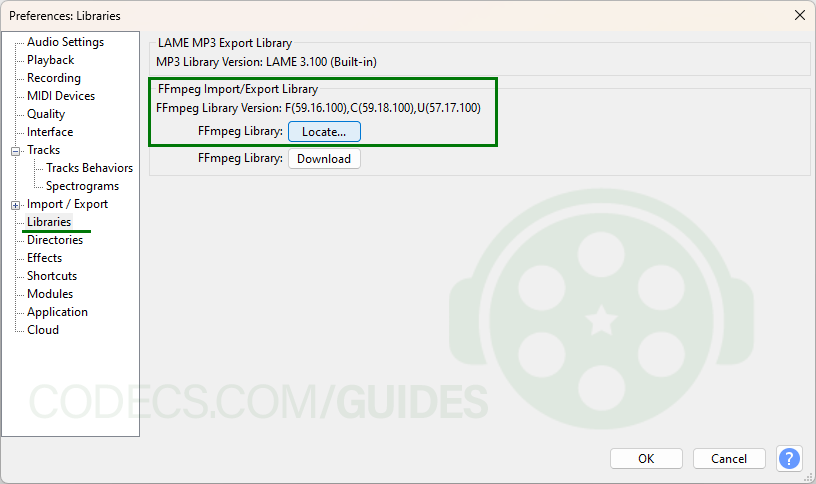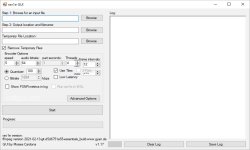Audacity is a powerful, open-source audio editing tool used by professionals and hobbyists alike. However, by default, it may not support all audio formats.
FFmpeg is a versatile multimedia framework that expands Audacity's capabilities, allowing it to handle a wider variety of audio formats.
To work with a wider range of audio formats in Audacity, you need to install FFmpeg. Here’s a simple guide to help you set it up!
Step 1: Download FFmpeg
Download and run the installer.
For Windows:
- Download FFmpeg 5.0.0 for Audacity -32-bit Windows
- Download FFmpeg 5.0.0 for Audacity - 64-bit Windows
For macOS:
Note: FFmpeg is compatible with Audacity versions 3.x.
Step 2: Link FFmpeg to Audacity
Open Audacity and go to Edit > Preferences (or Audacity > Preferences on macOS).
In the Libraries tab, click Locate next to FFmpeg.
If not automatically detected, browse to find the avformat-55.dll (Windows) or libavformat.dylib (macOS) file in the FFmpeg for Audacity directory.
Click OK to confirm.
What audio formats does FFmpeg add to Audacity?
FFmpeg enables support for:
- Import: MP3, M4A/AAC, WMA, AC3, AMR, and many others.
- Export: MP3, M4A/AAC, WMA, AC3, AMR.
- Video audio: Extract audio from MP4, AVI, MKV, MOV, and more.
Why doesn't Audacity include FFmpeg by default?
Licensing reasons. Some audio codecs (like MP3) have patent restrictions that prevent Audacity from including them in the default installation.
FFmpeg is distributed separately to comply with licensing requirements.














How to Download HEVC Video Extension for Free
actually worked, made my day better icl
Read More →Best Player for Subtitles (2025 Guide)
@P.A. Blok You're right, thanks for the feedback! We've updated the guide to clarify that VLC does auto-detect ...
Read More →How to Play HEVC Files in VLC Media Player (2...
@VanguardLH You're right, it'll be corrected. Thanks for pointing it out!
Read More →